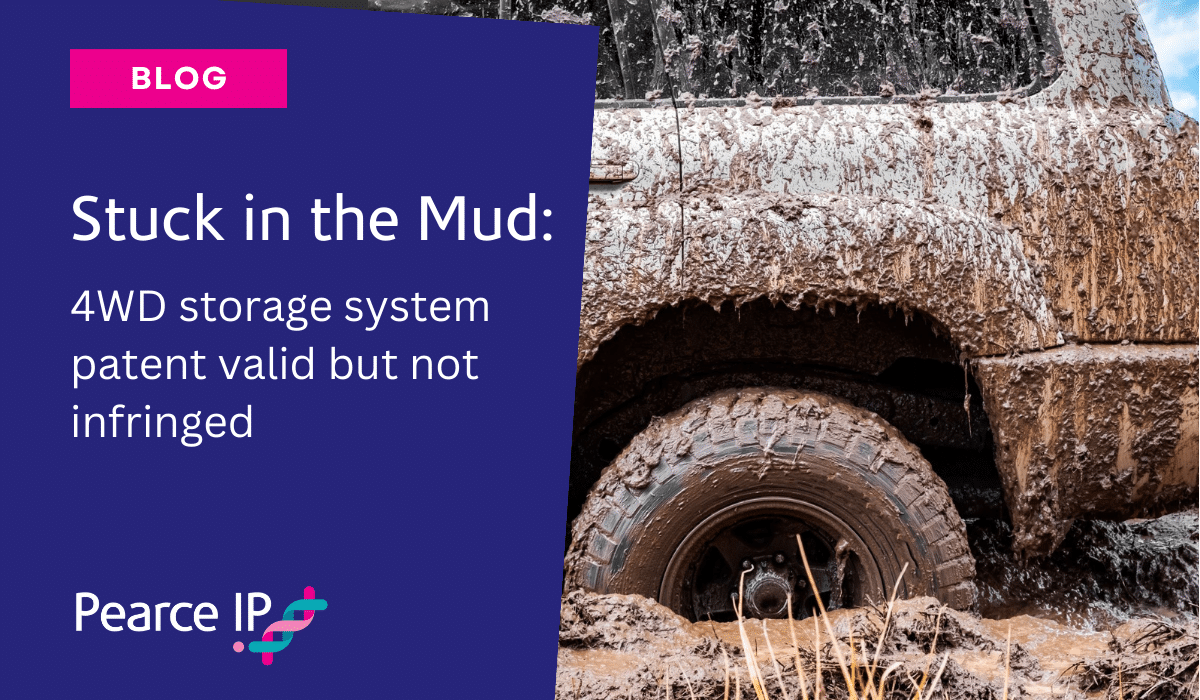Date: 24 January 2024
Court: Federal Court
Judge: Downes J
Date:
Court:
Judge:
24 January 2024
Federal Court
Downes J
In the first Federal Court patent decision handed down in 2024, MSA 4×4 Accessories Pty Ltd failed to establish infringement by Clearview Towing Mirrors Pty Ltd of MSA’s patent to a mountable storage device, commonly used in off-road and trade vehicles. The blow was compounded by the Court upholding Clearview’s claim of unjustified threats of infringement under s 128 of the Patents Act 1990 (Cth) and contravention of s 18 of the Australian Consumer Law (ACL) regarding external communications by or on behalf of MSA. Although moot given the finding of non-infringement, the Court rejected Clearview’s validity challenge. Significantly, the Court rejected or gave no weight to key parts of Clearview’s expert evidence on obviousness, pointing to significant deficiencies in its preparation.
MSA, as exclusive licensee, and the patentee (a director of MSA), asserted infringement by Clearview of Australian patent AU2009245888 (Patent). The Patent is directed to a slide-out apparatus for holding and storing items in vehicles, marketed under the name MSA4X4 DropSlide™. Clearview’s “Easy Slide” product, designed for the same purpose, was at the centre of the infringement dispute.
Unjustified threats
The Court’s finding of non-infringement was not automatically determinative of the unjustified threats counterclaim. These counterclaims related to two announcements sent by MSA to customers and potential customers, while a further unjustified threats claim related to a letter from the lawyers for MSA and the patentee. Despite acknowledging that the Court has typically found infringement threats to be unjustified where a patent is held not infringed, Justice Downes held that this will not always be the case.
While differing in tone, all the communications referred to the potential for Clearview to bring infringement proceedings. However, both the first announcement and the lawyer’s letter specifically referred to the Clearview Easy Slide product infringing the Patent, while the second announcement did not specifically refer to the Clearview product. This appeared to be key to the Court’s finding that the former constituted a threat of infringement while the latter did not, although the ‘strident’ tone of the first announcement was also a factor.
Having made this finding, the Court then found that MSA and the patentee had failed to discharge their onus to demonstrate why these threats were not unjustified in light of the non-infringement finding. The ACL claim followed the finding on unjustified threats.
The obviousness case and expert evidence
Clearview’s invalidity case ultimately failed. While moot given the non-infringement finding, her Honour’s judgment on invalidity is a salient reminder of the expectations of Australian courts when it comes to the preparation of expert evidence.
Justice Downes excluded some expert evidence led by Clearview on obviousness because the expert had been provided with the Patent before giving his evidence on his knowledge and experience as at the Patent’s priority date. Her Honour accepted that it is not a blanket rule that expert evidence should always be excluded when the expert had reviewed the patent in suit prior to giving evidence on the issue of obviousness. However, in this case there was no evidence that Clearview’s lawyers had instructed him on what it meant for an invention to be “obvious” as that term is understood in patent litigation. There was also insufficient evidence to demonstrate what the expert understood “obvious” to mean when he expressed his opinions. Her Honour therefore determined not to admit key paragraphs of the expert’s first affidavit into evidence.
Justice Downes also gave no weight to the expert’s evidence as to the approach he would have taken to a hypothetical ‘design task’ because the design task parameters provided to the expert included parameters which did not form part of the common general knowledge at the priority date. Her Honour further held that the framing of the design task infected the expert’s evidence on obviousness as it impermissibly enlarged the “body of knowledge and information” against which inventive step was to be tested, which was contrary to principle, and infected the expert’s evidence.
Finally, Justice Downes identified significant shortcomings in Clearview’s evidence as to whether one of the prior art documents would have been “ascertained, understood, [and] regarded as relevant” at the priority date, as required by the Patents Act 1990 (Cth) in its pre-Raising the Bar form. In particular, her Honour was not persuaded that the expert would have searched Google Patents which became available only a year before the priority date. Nor was her Honour persuaded that the expert would have used the search terms set out in his affidavit evidence, given the choice of search terms was likely impermissibly influenced by exposure to the Patent and the design task parameters (which included parameters that did not form part of the common general knowledge as at the priority date).
About Pearce IP
Pearce IP is a boutique firm offering intellectual property specialist lawyers, patent attorneys and trade mark attorneys to the life sciences industries (in particular, pharmaceutical, biopharmaceutical, biotech, ag-tech and food tech). Pearce IP is the 2021 ‘Intellectual Property Team of the Year’ (Lawyers Weekly Australian Law Awards) and was shortlisted for the same award in 2022. Pearce IP is ranked in IAM Patent 1000 and Managing IP (MIP) IP Stars, in Australasian Lawyer 5 Star Awards as a ‘5 Star’ firm, and the Legal 500 APAC Guide for Intellectual Property.
Our leaders have been recognised in virtually every notable IP listing for their legal, patent and trade mark excellence including: IAM Patent 1000, IAM Strategy 300, MIP IP Stars, Doyles Guide, WIPR Leaders, 5 Star IP Lawyers, Best Lawyers, and Australasian Lawyer 5 Star Awards, and have been honoured with many awards including Australian Law Awards – IP Partner of the Year, Women in Law Awards – Partner of the Year, Women in Business Law Awards – Patent Lawyer of the Year (Asia Pacific), Most Influential Lawyers (Changemaker), among other awards.

Helen Macpherson
Executive, Lawyer (Head of Litigation –Australia)
Helen has over 25 years’ experience as an intellectual property specialist and is recognised as an industry leader. Helen advises on all forms of intellectual property including patents, plant breeder’s rights, trade marks, copyright and confidential information.
Throughout her career, Helen has maintained a strong focus on high-value patent mandates involving complex technologies. In these mandates, Helen has been able to draw upon her technical training in biochemistry and molecular biology, as well as her ability to up-skill swiftly in relation to diverse technologies. Helen’s patent work has encompassed the technical fields of inorganic, organic, physical and process chemistry, biochemistry, biotechnology (including genetics, molecular biology and virology) and physics.
Helen is a member of the Intellectual Property Committee of the Law Council of Australia, as well as a member of the Intellectual Property Society of Australia and New Zealand.

Naomi Pearce
CEO, Executive Lawyer (AU, NZ), Patent Attorney (AU, NZ) & Trade Mark Attorney (AU)
Naomi is the founder of Pearce IP, and is one of Australia’s leading IP practitioners. Naomi is a market leading, strategic, commercially astute, patent lawyer, patent attorney and trade mark attorney, with over 25 years’ experience, and a background in molecular biology/biochemistry. Ranked in virtually every notable legal directory, highly regarded by peers and clients, with a background in molecular biology, Naomi is renown for her successful and elegant IP/legal strategies.
Among other awards, Naomi is ranked in Chambers, IAM Patent 1000, IAM Strategy 300, is a MIP “Patent Star”, and is recognised as a WIPR Leader for patents and trade marks. Naomi is the 2023 Lawyers Weekly “IP Partner of the Year”, the 2022 Lexology client choice award recipient for Life Sciences, the 2022 Asia Pacific Women in Business Law “Patent Lawyer of the Year” and the 2021 Lawyers Weekly Women in Law SME “Partner of the Year”. Naomi is the founder of Pearce IP, which commenced in 2017 and won 2021 “IP Team of the Year” at the Australian Law Awards.

